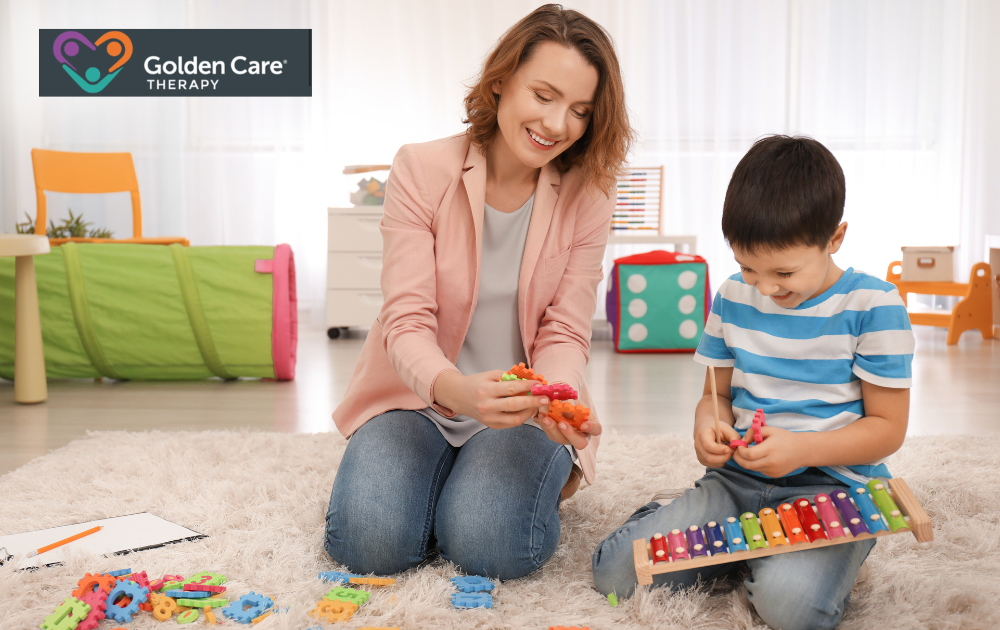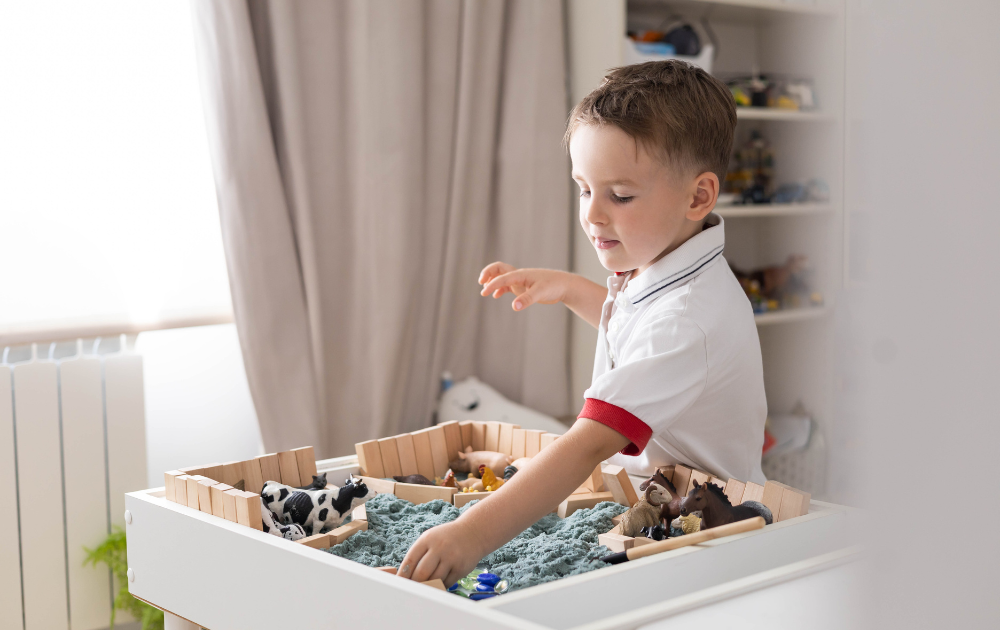Engaging activities play a vital role in the development and well-being of individuals with autism. These activities can help improve communication, social, and daily living skills. At the same time, it can also address unwanted behaviors.
Without further ado, let’s look at several engaging activities for autism that you can implement at home.
Homemade Slime Fun
Making homemade slime offers both a sensory-rich experience and an opportunity for children to learn about cause and effect. While they mix the ingredients, they get to observe how they transform from liquid to solid. This engages their sense of touch, sight, and even smell.
Here’s a simple recipe for homemade slime:
- Clear or white school glue – 1/2 cup
- Baking soda – 1/2 teaspoon
- Contact lens solution – 1 tablespoon
- Food coloring (optional) – A few drops
Once you have the ingredients, simply follow these steps:
- In a bowl, pour 1/2 cup of clear or white school glue.
- Add 1/2 teaspoon of baking soda to the glue and mix well.
- If desired, add a few drops of food coloring to the mixture and stir.
- Gradually add 1 tablespoon of contact lens solution to the mixture, stirring continuously.
- Keep stirring until you notice the slime pulling away from the sides of the bowl.
- After that, knead the slime with your hands until it reaches the desired consistency.
While making slime, encourage your child to explore the texture, stretchiness, and squishiness of the slime. This hands-on experience provides a sensory-rich opportunity for tactile exploration and can be a fun and calming activity for individuals with autism.
Sensory Play Ideas
Sensory play involves engaging in activities that stimulate the senses and promote sensory integration. Here are a few sensory play ideas that can be enjoyed at home:

Remember to tailor these activities to suit your child’s preferences and sensitivities.
Bead Threading
Bead threading is a fun and interactive activity that can help improve fine motor skills in individuals with autism. By manipulating small objects and threading them onto a string or a shoelace, individuals can enhance their hand-eye coordination, grasp, and finger control.
To engage in bead threading, you will need a selection of beads with different shapes, sizes, and colors. Encourage the individual to pick up one bead at a time and thread it onto the string.
This activity not only promotes fine motor skills but also encourages concentration, focus, and visual tracking.
Puzzles and Finger Painting
Puzzles and finger painting are enjoyable activities that can further aid in the development of fine motor skills for individuals with autism. Puzzles help improve hand-eye coordination, problem-solving skills, and spatial awareness.
You want to begin with simple puzzles featuring larger pieces and gradually progress to more complex ones as skills improve.
Finger painting is a sensory-rich activity that allows individuals to explore different textures and colors while enhancing their fine motor skills. Encourage the use of fingers to create patterns, shapes, and designs on paper using non-toxic paint. This activity promotes finger control, hand strength, and creativity.
Memory Games
Memory matching games are a great way to stimulate cognitive development in individuals with autism. These games require the individual to remember the location of different images and match them together.
Memory games can be played with cards, tiles, or even online platforms specifically designed for memory training.
The benefits of memory games for individuals with autism include improving concentration, enhancing visual memory, and developing attention to detail. These games also promote cognitive flexibility and help individuals practice their problem-solving skills.
Sorting and Sequencing
Engaging in sorting and sequencing activities is another effective way to stimulate cognitive development in individuals with autism. These activities involve organizing objects, pictures, or numbers based on specific criteria or patterns.
Sorting tasks can include sorting objects by color, shape, or size, while sequencing tasks involve arranging items in a specific order.
Sorting and sequencing activities promote logical thinking, pattern recognition, and problem-solving skills. They also enhance visual perception and help individuals develop a better understanding of concepts such as categorization and order.
That said, make sure to adapt these activities to the individual’s abilities and preferences, ensuring that they are challenging yet achievable. Tailoring the activities to the individual’s interests can also increase motivation and engagement.

The Bottom Line
Turning your home into a hub of fun and engaging activities for your autistic child can make everyday life exciting and fulfilling. Whether it’s creating sensory-friendly spaces, exploring imaginative play, or enjoying calming routines together, these activities not only spark joy but also nurture growth and connection.
It’s through embracing creativity and making each moment enjoyable that you can help build a supportive environment where your child can thrive and express themselves freely.
So, dive into these activities with enthusiasm and watch as your home becomes a place of endless possibilities and shared happiness. For more information on ABA programs in Georgia, New Jersey, Indiana, and New York, or to explore how Golden Care Therapy can support your needs, feel free to contact us or book a consultation today. We’re here to help you every step of the way.



